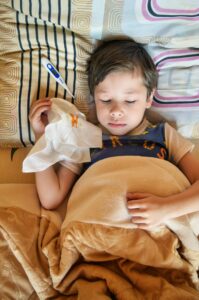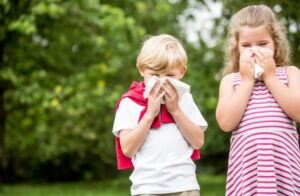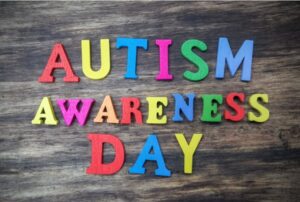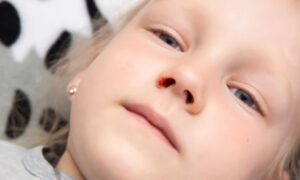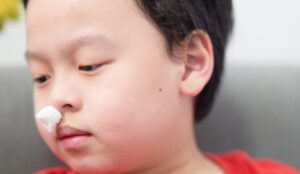As temperatures drop during the winter season, children become more susceptible to common illnesses, particularly respiratory diseases. For parents, understanding the symptoms of these illnesses and taking preventive measures is crucial to maintaining their children's health. Here are some common winter illnesses and prevention tips.
1. Influenza (Flu)
Influenza is one of the most common viral infectious diseases in winter. Cold weather creates favorable conditions for the flu virus to spread. Typical flu symptoms include high fever, cough, runny nose, sore throat, muscle aches, and fatigue. Children may also experience chills and headaches.
Prevention Tips:
- Flu Vaccine: The flu vaccine is an effective way to prevent influenza. It is recommended to vaccinate children annually, especially before winter begins.
- Good Hygiene Habits: Encourage regular handwashing and discourage children from touching their eyes, nose, and mouth to reduce the risk of spreading the virus.
- Keep Indoor Air Ventilated: Open windows regularly to ensure proper airflow and keep indoor air fresh, reducing the buildup of bacteria and viruses.
2. Bronchitis
Cold weather can trigger bronchitis in children, which is an inflammation of the bronchial tubes often associated with upper respiratory infections. Symptoms of bronchitis include coughing, wheezing, shortness of breath, and mild to moderate fever. If a child develops these symptoms shortly after a cold, it may have progressed into bronchitis.
Prevention Tips:
- Stay Warm: Ensure children are dressed warmly, especially when going outside, to protect their respiratory tract from cold air.
- Avoid Smoke and Pollution: Secondhand smoke and air pollution can worsen bronchitis symptoms. Make sure children live in a smoke-free and clean environment.
- Stay Hydrated: Keep children well-hydrated to help thin out respiratory secretions and alleviate coughing symptoms.
3. Pneumonia
Winter is also a peak season for pneumonia, a serious lung infection commonly caused by bacteria or viruses. Symptoms of pneumonia include persistent high fever, severe coughing, difficulty breathing, and chest pain. Children, especially those with weaker immune systems, are more vulnerable to pneumonia.
Prevention Tips:
- Regular Check-ups: If a child has symptoms of a cold or other respiratory infections, monitor their condition regularly and seek medical attention to prevent it from developing into pneumonia.
- Vaccination: Pneumonia vaccines, as well as other respiratory vaccines, can effectively prevent some of the pathogens that cause pneumonia.
- Balanced Diet: Ensure children have a balanced diet to strengthen their immune system and help them fend off infections.
4. COVID-19
COVID-19 symptoms vary from person to person, and children's symptoms are usually milder than those in adults, but some children may develop severe symptoms or complications. Here are common symptoms that children may exhibit after contracting COVID-19:
- Fever: A high temperature is one of the typical symptoms of COVID-19 in children. Some may also experience chills.
- Cough: A dry or persistent cough is a common respiratory symptom, sometimes accompanied by a sore throat.
- Fatigue and Loss of Appetite: After contracting COVID-19, children may feel tired and have a decreased appetite.
- Runny Nose and Nasal Congestion: Some children may exhibit cold-like symptoms such as a runny nose or nasal congestion after infection.
- Shortness of Breath: Though less common, some children may experience rapid or difficulty breathing.
- Diarrhea and Vomiting: COVID-19 may also affect the digestive system, leading to diarrhea or vomiting in children.
- Loss of Taste or Smell: Although rare, some children may temporarily lose their sense of taste or smell after infection.
Prevention Tips:
To reduce the risk of COVID-19 in children, parents should take a series of preventive measures, especially during winter when respiratory viruses are prevalent. Here are some effective preventive methods:
- Vaccination: If the child is eligible, getting the COVID-19 vaccine is the best way to prevent infection. Vaccines can reduce the risk of infection and lower the chances of severe illness or hospitalization.
- Maintain Good Hygiene: Teach children to wash their hands frequently, especially before eating, after using the bathroom, or after coughing or sneezing. Wash hands with soap and water for at least 20 seconds.
- Wear a Mask: In indoor public places or crowded areas, it is recommended that children wear a mask, especially when social distancing is not possible.
- Maintain Social Distance: Try to avoid taking children to large gatherings, especially indoors. Encourage children to maintain at least a 1-meter distance from others.
- Increase Ventilation: Indoor spaces should be well-ventilated. Opening windows or using air filters can reduce the concentration of airborne viruses.
- Avoid Contact with Sick Individuals: If someone at home exhibits COVID-19 symptoms, parents should try to isolate the child from the infected person to prevent contact.
Winter is a high-risk season for various respiratory illnesses. Understanding the symptoms of these diseases and taking preventive measures can help reduce the likelihood of your child falling ill. Vaccination, good hygiene practices, and providing a warm and clean environment are all effective ways to protect children from common winter illnesses. Parents should keep a close eye on their child's health, and if symptoms arise, seek medical advice promptly to ensure a quick recovery.






